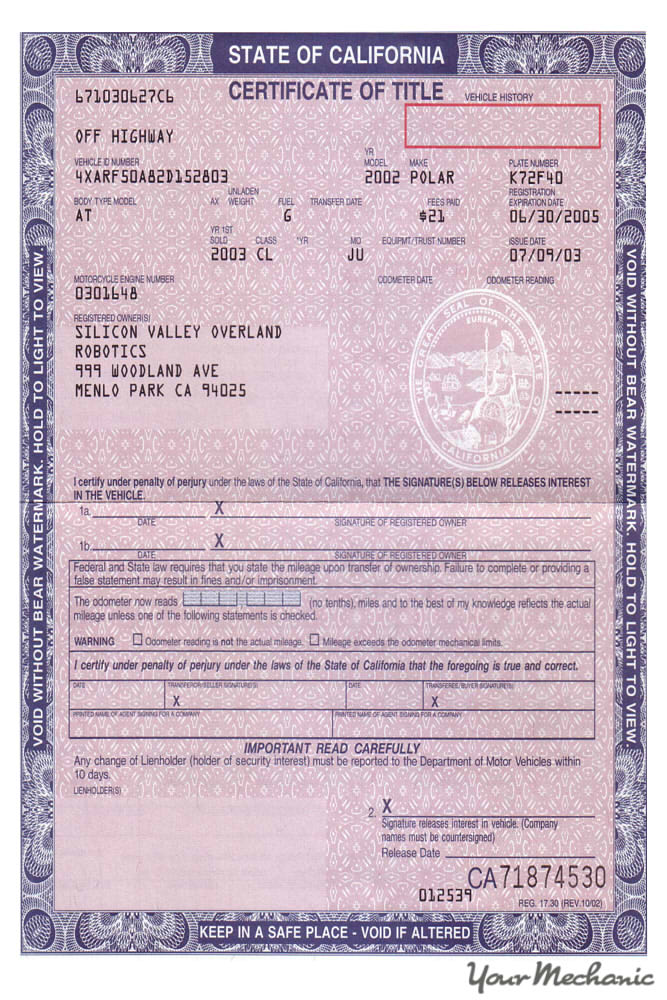

When you buy a car, whether it is a new car from the dealership, a used vehicle from a car lot or dealer, or a used car as a private sale, you need to come to an agreement for your purchase. Typically, the sales process to get there is the same. You’ll need to respond to an advertisement for the car, meet the seller to inspect and test drive the car, discuss agree on a sale and complete payment for the car you are buying.
Every step along the way, you need to be cautious and wary. It’s a way to protect yourself from encountering a difficult situation with the seller or with the car.
Part 1 of 5: Respond to ads with caution
From identity theft to weeding out scams and poorly represented vehicles, you need to be careful which ads you respond to and how you respond.
Step 1: Analyze the ad picture for the vehicle you found. If the picture is a stock picture and not of the actual car, the listing may not be accurate.
Also look for ill-placed items like palm trees for car ads in the northern states.
Step 2: Check the contact information and method. If the phone number on the ad is from overseas, it could very well be a scam.
If the contact information only includes an email address, it’s not a reason to worry just yet. It may just be a case of the seller being cautious as well.
Step 3: Contact the seller to arrange a viewing and test drive. Always meet in a neutral location if you are meeting a private seller.
This includes places like coffee shops and grocery store parking lots. Provide the seller only with your basic information such as your name and contact number.
Provide a cell phone number if you can as it can’t be easily traced back to your address. A private seller will never need your Social Security Number.
- Tip: If the seller wants to ship the car to you or wants you to wire them money for the car sight unseen, you’re the victim of a potential scam.
Part 2 of 5: Meet the seller to see the car
When you are going to meet the seller to check out a car you are interested in, it can provoke excitement and anxiety. Keep calm and don’t put yourself in an uncomfortable situation.
Step 1: Meet in an appropriate location. If you’re meeting a private seller, meet in a location that is brightly lit and has plenty of people around.
In the event the seller has ill intentions, you can slip away into the crowd.
Step 2: Don’t bring cash. Avoid bringing cash with you to a car viewing if you can avoid it, as the potential seller may try to swindle you if they know you have cash with you.
Step 3: View the car completely on your own. Don’t let the seller guide you around the vehicle as they may try to distract you from flaws or problems.
Step 4: Test drive the car before you buy it. Listen and feel for anything that feels out of the ordinary on the test drive. A minor noise may lead to a major problem.
Step 5: Have the car inspected. Arrange for your trusted mechanic to look over the car before you buy it.
If the seller is hesitant or unwilling to let you have a mechanic inspect the vehicle, they may be hiding a problem with the car. Be prepared to walk away from the sale. You can also arrange to have a mechanic perform an inspection as a term of the sale.
Step 6: Check for a lien on the title. Ask the seller to see the car’s title and look for lienholder information.
If there is a lienholder, don’t complete the purchase unless the seller takes care of the lien before the sale is complete.

Step 7: Check the title status on the car’s title. If the car has a rebuilt, branded, or salvage title that you weren’t aware of, walk away from the transaction.
Never buy a car when the title is anything but clear if you aren’t fully aware of what it means.
Part 3 of 5: Discuss the terms of the sale
Step 1: Consider a state inspection. Discuss whether the vehicle will have its state inspection performed or be certified before you take possession.
You’ll want to know if there are any safety-related issues that need attention before you complete the sale. Also, if there are repairs required to pass your state inspection, that means you may not be able to drive the vehicle you are buying until the repairs are completed.
Step 2: Determine if the price matches the vehicle’s condition. If the vehicle is to be sold without certification or in “as-is” condition, you can usually demand a lower price.
Part 4 of 5: Make a sales agreement
Step 1: Make a bill of sale. When you come to terms for your vehicle purchase, write down the details on a bill of sale.
Some states require that a specific form is used for your bill of sale. Check with your DMV office before you meet with the seller. Be sure to indicate the vehicle’s VIN number, make, model, year, and color, as well as the sale price for the car excluding any taxes or fees.
Include both the buyer’s and the seller’s name, phone number, and address.
Step 2: Write down any terms for your sales agreement. This can include a clause subject to financing approval, any repairs to be completed, and if the vehicle is to be certified.
Include whether any optional equipment such as floor mats or remote start is to remain with the car or go back to the seller.
Step 3: Provide a deposit for your purchase. Secure methods of a deposit are by check or money order.
Avoid using cash if at all possible as it can’t be traced in the transaction if there is a dispute. Indicate on your sales agreement how much your deposit is and how it was paid. Both the buyer and the seller should have a copy of the sales agreement or bill of sale.
Part 5 of 5: Complete the car sale
Step 1: Perform title transfer. Complete the title transfer on the back of the certificate of title.
Don’t provide payment until the title transfer document is complete.
Step 2: Pay the balance. Provide payment to the seller for the balance of the agreed sale price.
Pay by certified check or money order for a secure transaction. Do not pay by cash to avoid the possibility of a fraudulent encounter or a robbery.
Step 3: Indicate on your bill of sale that payment has been made in full. Have the seller sign that payment has been received.
No matter what stage you are at in the buying process, if something doesn’t feel right, put the transaction on hold. Buying a car is a big decision and one where you don’t want to make a mistake. Flesh out the problem you have with the transaction and resume the purchase if you discover that your worries were unfounded, or walk away from the sale if you simply aren’t comfortable. Be sure to have one of YourMechanic’s certified professionals perform a pre-purchase inspection and keep up with your car’s regular maintenance.



